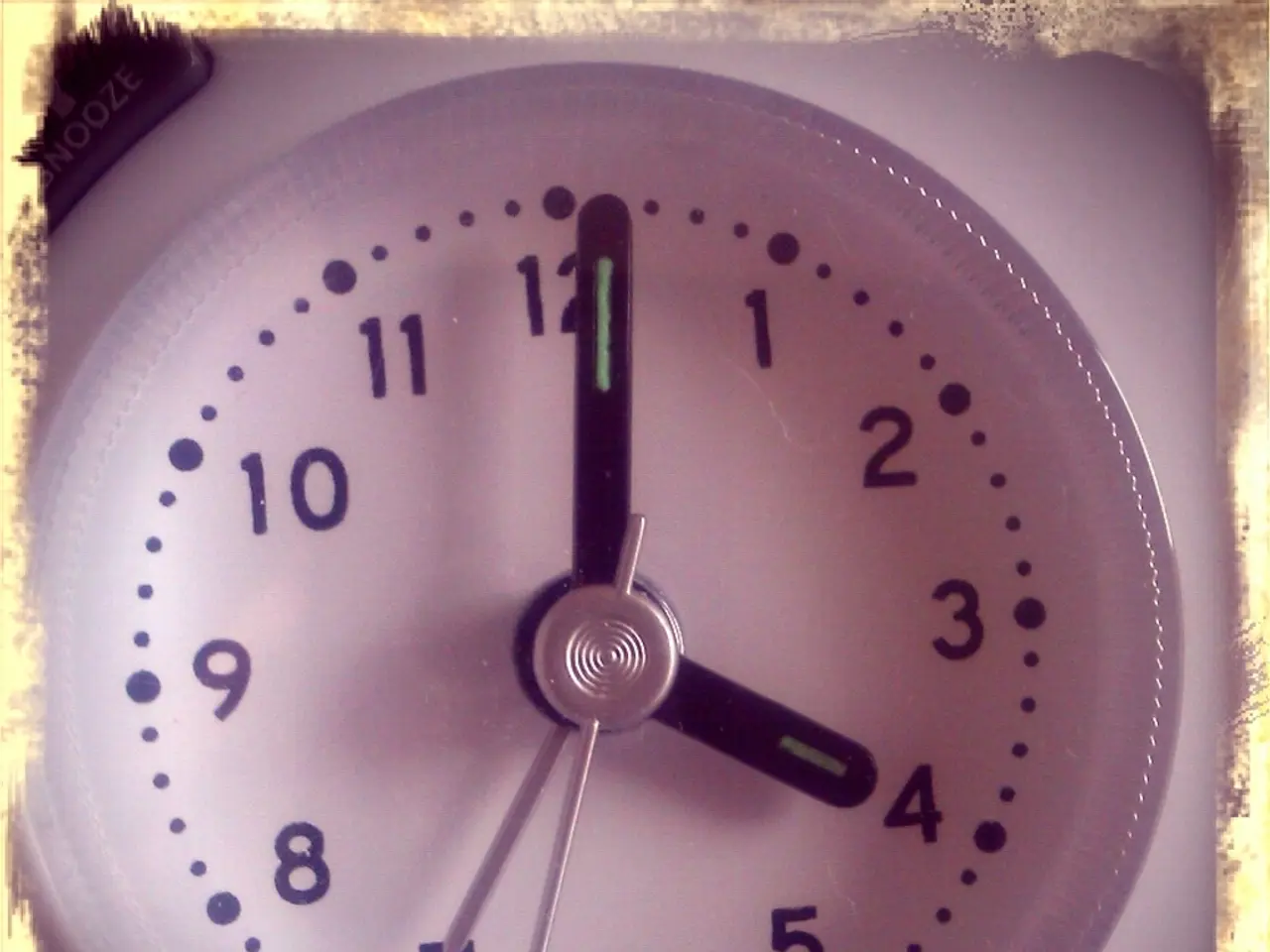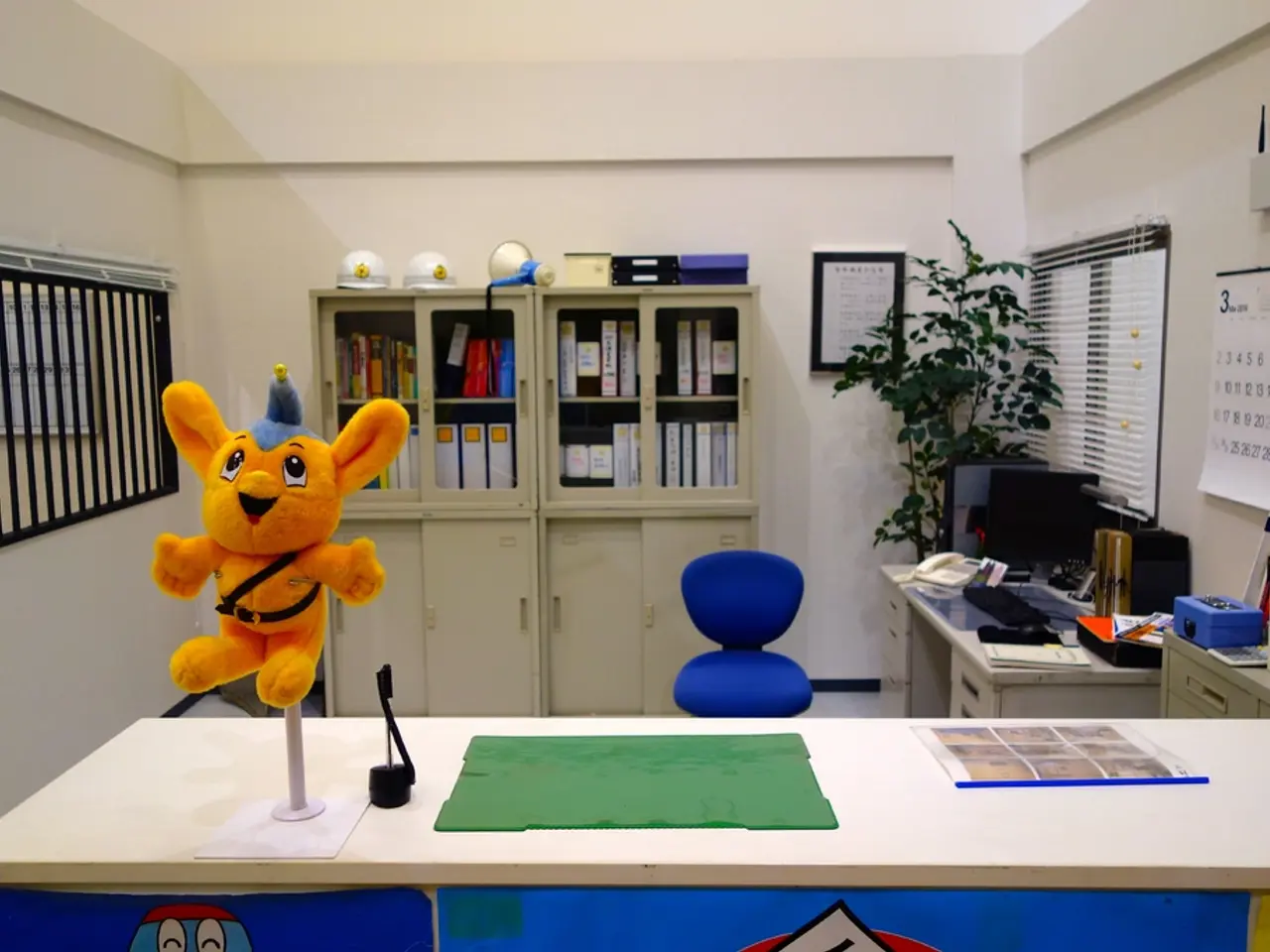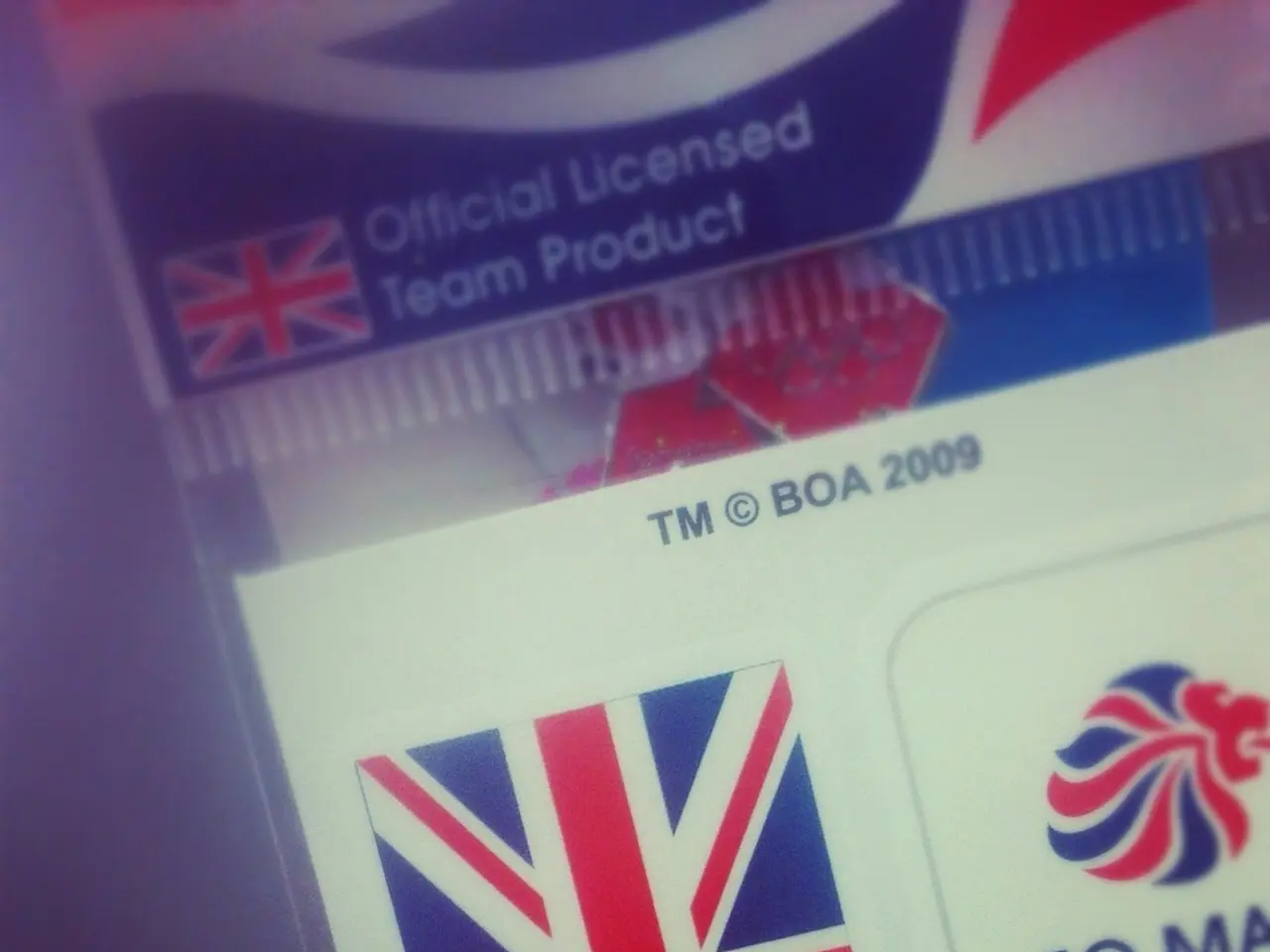2025 One-Hertz Contest: Introducing the Revolutionary Spinning Dial Clock
In an exciting fusion of old and new, David Plass has built a captivating flip-disc clock that meets the requirements of the One-Hertz Challenge. This challenge, which invites creators to generate a 1 Hz pulse train using discrete electronic components, is particularly relevant to mechanical display technology repurposing.
The clock, assembled in a kitchen storage tub, features four seven-segment flip disc displays sourced from Flipo.io. Each display is controlled by a hefty 0.5 amp pulse, creating a magnetic field with coils placed underneath the fluro/black flip dots. This action not only makes it obvious that the clock is working but also contributes to its beauty, with the fluro dots adding a dynamic touch to the static mechanical displays.
The heart of the clock is a Wemos D1, a Wi-Fi-enabled microcontroller. This microcontroller queries a Network Time Protocol (NTP) server for accurate time, ensuring the clock displays the correct time. The Wemos D1 then drives the necessary segments to display the current time on the flip disc displays.
To meet the requirements of the One-Hertz Challenge, the clock flips a couple of dots once every second. However, David has commented out that part of the code at times to reduce the noise, ensuring the clock operates smoothly.
This project is a fine entry to the 2025 One-Hertz Challenge, demonstrating the potential of blending vintage mechanical displays with simple electronic timing circuits. For those interested in participating in the One-Hertz Challenge for mechanical display technology repurposing, here's a simplified guide:
- Obtain a quartz crystal oscillator or another high-frequency source (such as 32,768 Hz).
- Design and build a chain of discrete frequency divider circuits (flip-flops, counters, logic gates) that progressively halve the frequency until you reach 1 Hz.
- Output the resulting 1 Hz pulse train to drive your mechanical display's timing mechanism.
- Optionally, document your design and share it with the community participating in the challenge (for example, on platforms like Hackaday where this challenge is discussed).
The One-Hertz Challenge is about generating a precise 1 Hz output from a higher-frequency oscillator using discrete components, which can then be used to drive mechanical display technologies that require a one-second timing signal. This approach emphasizes discrete components and fundamental electronics principles, making it ideal for projects aimed at blending vintage mechanical displays with simple electronic timing circuits.
- The flip disc clocks created by David Plass, such as the one he built for the One-Hertz Challenge, are excellent examples of merging vintage mechanical displays with contemporary gadgets like the Wemos D1 microcontroller.
- The One-Hertz Challenge encourages creators to use technology by requiring them to build a 1 Hz pulse train using discrete electronic components, which can then be used to drive mechanical display gadgets with a one-second timing signal.




